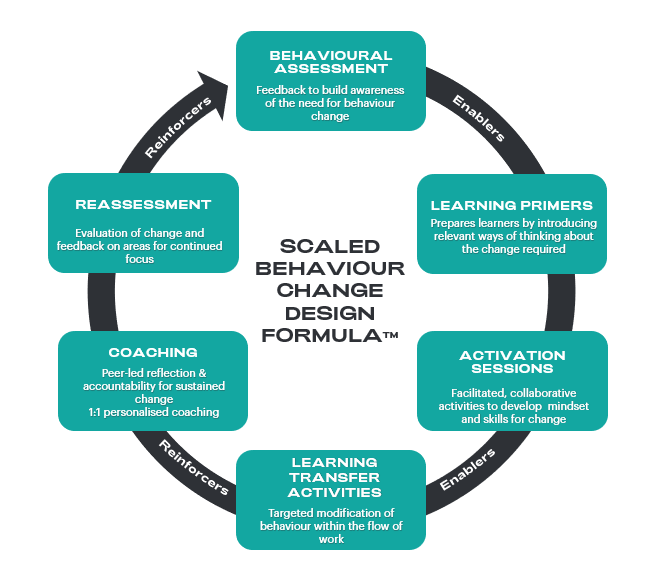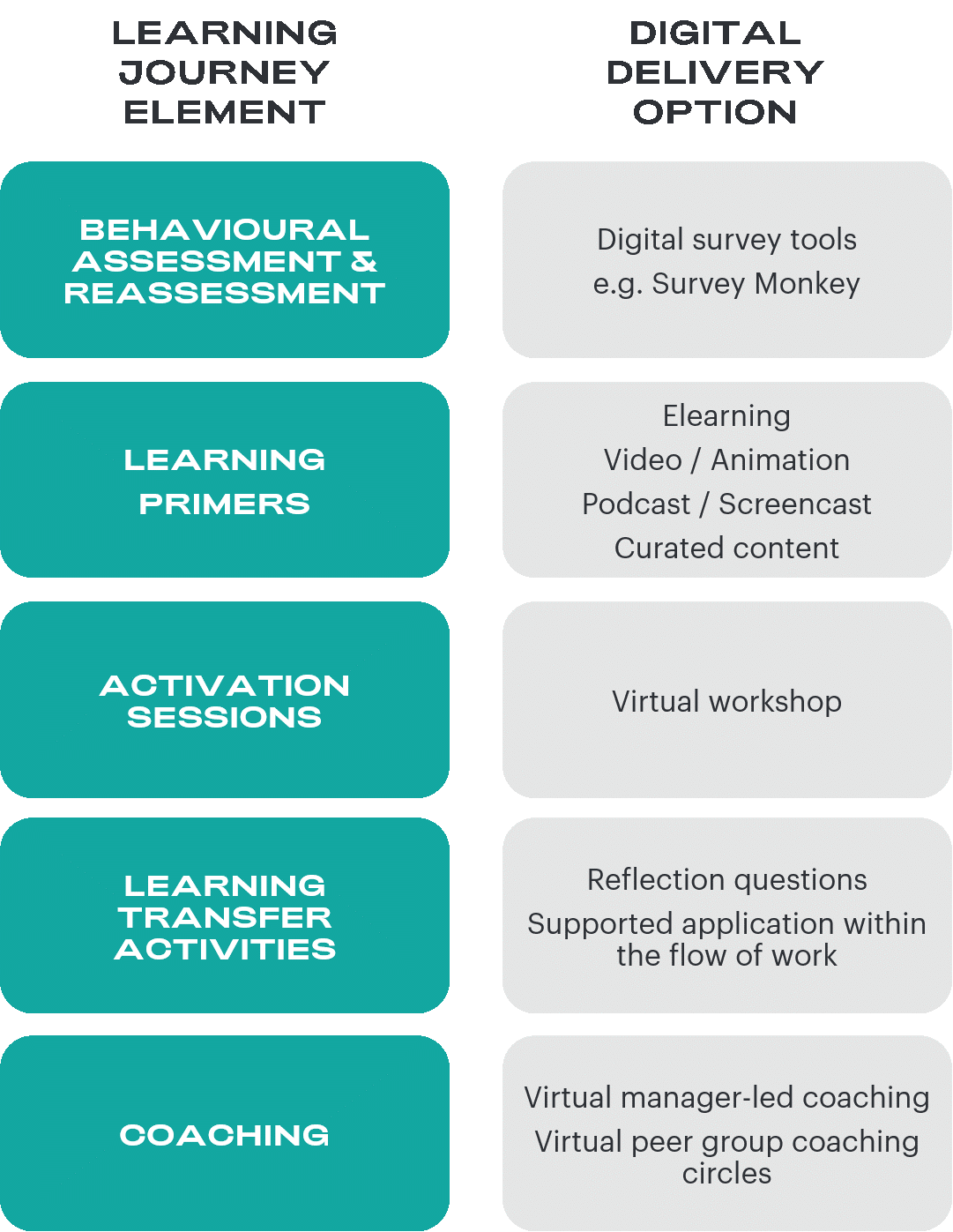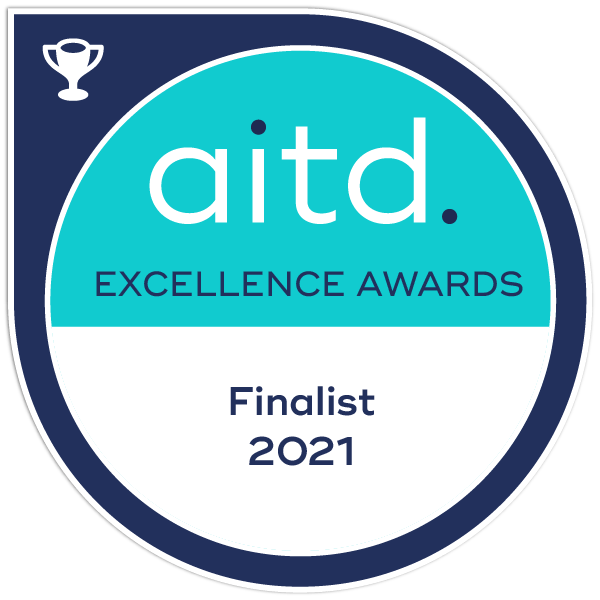BLENDED LEARNING FOR THE DIGITAL AGE
Megan Barrett • April 25, 2021
The benefits of a blended approach to learning are clear; there is an overwhelming body of research which shows that well designed blended learning promotes greater level of knowledge retention and mastery than face to face training alone.
(Training & Development Feb 2017; Bersin. J., 2006).
The benefits of blended learning include combining the efficiency of digital (online) learning with the human touch of in person, or face-to-face learning.
So far, so good: but how does good blended learning design play out in today’s world of remote working and digital connection? How do we retain the human touch, which brings opportunity for social learning, and deepening understanding through rich conversation and application?
Through much experience and research, Spring Point has developed a blended learning methodology for which we have won multiple awards. Our model, which is grounded in the dominant theories on creating behavioural change, is a proven method for creating behaviour change at scale. And the good news is, this methodology is equally effective in a fully or partially digital environment.
For each stage of the learning journey, there are efficient and effective options for digital delivery:
Using our Scaled Behaviour Change Design Formula, we’ve taken several clients through rapid redevelopment of face to face training into a blended, fully digital solution. So what have we learnt along the way?
- Get active. The precondition for effective learning — virtual or otherwise — is voluntary engagement. Turn learners from passive passengers to active participants through structured opportunities to engage fully. This is especially important in virtual workshops.
- Be selective. Know your audience, and get super clear on performance outcomes. When moving to a digital solution, you’ll likely need to scale back your content, so hone in on content or activities which have a clear link to achieving outcomes.
- Break it up. As we all know from countless Zoom meetings, it’s more cognitively demanding to attend virtual events than face to face. We recommend the optimal time for workshops and coaching sessions is no more than 2.5 - 3hrs.
- Be creative! When delivering content through digital channels, it’s easy for learners to tune out. Get creative with your content, so you grab your learners’ attention and hold it.
Contact
03 8618 6904
Head office
Central House
101 Moray St.
South Melbourne, VIC 3205
ABN: 99 624 232 364
All locations
Awards
newsletter subscription
Thanks for subscribing to our newsletter. Keep an eye out for our next edition in your email.
Oops, there was an error.
Please try again later.
Spring Point acknowledges the Aboriginal and Torres Strait Islander peoples as the first inhabitants and the traditional custodians of the lands where we live, learn and work.
Spring Point is committed to fostering a safe, diverse and inclusive workplace.
© Spring Point 2022









